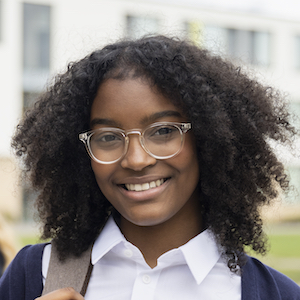
Samira
Spatial Bias
Samira is one of the estimated 7% of children in the school population who have relatively much higher spatial skills compared with their verbal abilities.
Samira is a bright and conscientious student. She can complete a Rubik’s Cube in 30 seconds and loves coding complex and interesting games in Python in her spare time.
Yet Samira’s teachers noticed she finds written and oral assignments challenging – they don’t reflect her practical skills.
Video
Key Questions
- Set Samira challenges involving active learning methods, such as simulations, problem-solving tasks and the creation of original ideas, particularly those involving imagery.
- Does Samira prefer alternative methods to record her learning visual imaginations - mind maps, diagrams, pictures or 3D images?
- Consider interventions that target relative challenges with verbal reasoning and how to support reading by understanding the individual strengths and challenges in this area.
- Is there any evidence to suggest that further targeted screening for specific strengths and challenges may be necessary (specific difficulties related to language and/or literacy).
*These profiles are for illustrative purposes and have been created to help introduce just some of the varied learner profiles your CAT4 data may show you, and to help support personalised learning. The profiles from your own CAT4 data may share some similarities with the example profiles but it is important to consider each learner individually.
